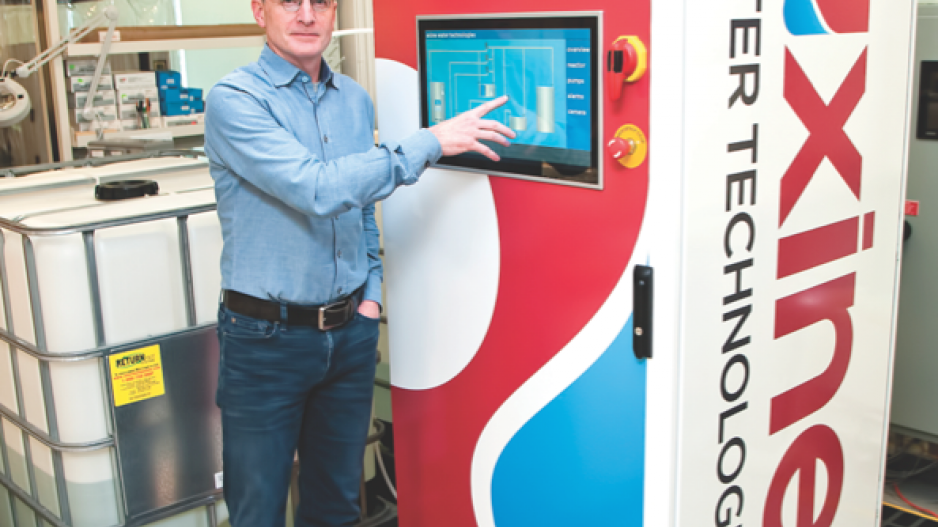The industrial waste water Jonathan Rhone comes across at his lab on the University Endowment Lands isn’t so different from the glow-in-the-dark stuff populating sci-fi movies – minus the neon radiance.
“The water we’re treating is so toxic that it’s being put into a truck and driven across the state to be put in either a deep well or incinerated or … put into a landfill,” said the CEO of Axine Water Technologies.
But instead of transporting toxic water over U.S. highways, Axine is taking its technology on the road to clean up industrial waste water in Oregon, Texas and Massachusetts.
Field tests for Axine’s fridge-sized devices capable of cleaning water in a matter of hours will take place at semiconductor, pharmaceutical and chemical manufacturing sites.
The technology can also be used for the mining and oil and gas sectors – a growing draw for Canadian energy companies feeling increased pressure from the governments of Prime Minister Justin Trudeau and Alberta Premier Rachel Notley to invest more in sustainable practices.
Incumbents in the water refinement industry, such as Vancouver-based Saltworks Technologies Inc., are also making a push into the waste-water market.
Launched in 2008, Saltworks originally focused on desalination and has since developed products aimed specifically at waste-water treatment for the energy sector.
The company’s treatment plants come at a cost of $8 to $20 per cubic metre of material treated daily, depending on whether it’s a site that produces shale gas or landfill leachate.
“When you talk water or energy, you talk commodities,” said Chrysalix CEO Wal van Lierop, whose clean-tech venture capital firm has led funding rounds for Axine.
“And in no commodity industry [will anybody] any longer pay a premium. Cost is king in these industries.”
Axine’s on-site treatment for polluted water uses electrolytic cells that react with organic compounds and break them down into water, nitrogen, carbon dioxide and a high-quality stream of hydrogen. The process produces no sludge and uses no chemicals.
Meanwhile, Rhone and van Lierop both said Axine’s method is relatively cheap compared with the alternatives.
Rhone said the field tests are the final steps before Axine begins signing commercial contracts in either late 2016 or early 2017.
“The market just for that application, treating waste water that goes off-site, is roughly $5 billion a year,” Rhone said.
But a 2015 Cleantech Group report revealed that investment in waste-water treatment fell for the first time since 2009, drawing US$358 million in 2014 compared with US$585 million a year earlier.
“While oil and gas majors have been active in investing in water innovations, the sudden drop in global oil prices may have an effect on their venture investment activity,” the report stated after singling out Saltworks as one of North America’s few big investment highlights of the year.
Axine has raised more than $7 million from investors since 2012 and is in the midst of another round of fundraising in anticipation of commercializing its technology within the next year, according to Rhone.
Componentry will be collected across the globe, but Axine will assemble all the devices in Canada at facilities it plans to own and operate.•




